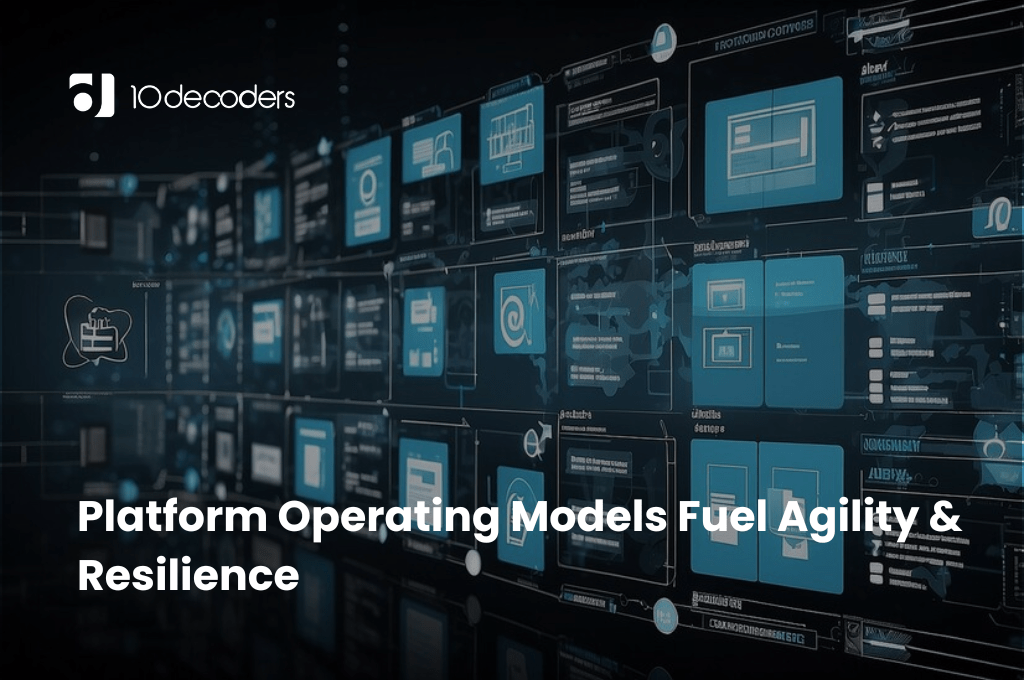Platform Operating Models Fuel Agility & Resilience.
Introduction
In the contemporary realm of business, characterized by rapid technological advancements and dynamic market landscapes, the imperative for organizations to adapt and thrive has never been more pronounced. To navigate the complexities of the digital age and emerge as leaders in their respective domains, companies must cultivate agility and resilience within their operational frameworks. This article explores the transformative potential of Platform Operating Models (POMs) in driving organizational agility and resilience.
Challenges Hindering Transformation
Across industries, legacy incumbents find themselves grappling with a myriad of challenges that hinder their transformation efforts. From siloed data repositories to non interoperable IT systems and entrenched legacy infrastructure, these hurdles impede the seamless flow of information and hamper the organization’s ability to adapt to evolving market dynamics. A prevailing resistance to change further exacerbates the situation, stifling innovation and impeding progress.
The Imperative of Digital Transformation
In response to the shifting tides of consumer preferences and competitive pressures, executives recognize the paramount importance of digital capabilities in driving sustainable growth and maintaining relevance in the marketplace. The journey toward digital transformation is fraught with complexities, as organizations often struggle to align their digital initiatives with overarching business objectives. Despite deploying numerous digital initiatives, many organizations find themselves mired in duplication and inefficiency, failing to realize the full potential of their investments.
The Essence of Platform Operating Models
At the heart of organizational agility and resilience lies the adoption of Platform Operating Models (POMs), which serve as catalysts for driving transformative change across the enterprise. By consolidating resources and expertise into cohesive platforms, POMs enable organizations to deliver shared products and services with unprecedented speed, efficiency, and scalability. POMs eliminate duplication, break down silos, and foster a culture of collaboration, thereby accelerating the pace of innovation and enhancing the organization’s competitive edge.
Paths to POM Success
Companies embarking on the POM journey have the flexibility to choose between two distinct paths: the bottom-up approach or the top-down approach. The bottom-up approach entails piloting a “no-regrets” platform, focusing on capabilities that are strategically valuable and likely to yield widespread adoption across the organization. Once the viability of the platform is validated, the organization can then scale its implementation across the enterprise. Conversely, the top-down approach involves designing comprehensive blueprints for target-state platforms, followed by phased implementation across various business units and divisions.
Strengthening POMs- Key Pillars for Success
1. Leveraging Ecosystem Partnerships
Ecosystem partnerships bolster the effectiveness of Platform Operating Models (POMs). These partnerships facilitate collaboration with external stakeholders, including suppliers, customers, and competitors, thereby amplifying the capabilities of POMs. By tapping into the collective expertise and resources within the ecosystem, organizations can drive innovation, access new markets, and create value propositions that transcend traditional boundaries.
2. Ensuring Data Security and Privacy
Organizations must prioritize data security and privacy to mitigate risks and protect sensitive information. With the proliferation of digital platforms and data exchange within ecosystems, maintaining robust cybersecurity measures is essential. POMs involve aggregating and sharing data across stakeholders, necessitating stringent protocols for encryption, access control, and data governance. By integrating security and privacy considerations into POM design and implementation, organizations can build resilience against cyber threats and instill confidence in their platform operations.
3. Cultivating Continuous Learning and Adaptation
Static mindsets and rigid hierarchies can hinder agility and innovation. Organizations must cultivate a culture that encourages experimentation, embraces failure as a learning opportunity, and prioritizes agility in decision-making. Empowering employees with the skills and autonomy to experiment, iterate, and adapt is crucial. By nurturing a culture of continuous learning and adaptation, organizations can realize the full potential of their POMs, driving innovation and resilience in an ever-evolving business environment.
Future Perspectives
Looking ahead, the adoption of Platform Operating Models is poised to become increasingly prevalent as organizations strive to stay ahead of the curve in an era defined by disruptive innovation and rapid technological advancements. As the digital landscape continues to evolve, organizations must remain vigilant in their efforts to adapt and innovate, leveraging POMs as strategic enablers of organizational agility and resilience.
Endnote
The adoption of Platform Operating Models represents a strategic imperative for organizations seeking to thrive in an era defined by volatility, uncertainty, complexity, and ambiguity (VUCA). By embracing agility and resilience as core tenets of their operational frameworks, organizations can effectively navigate the challenges of the digital age, drive innovation, and unlock the full potential of their talent pool. Through the strategic implementation of POMs, organizations can transcend traditional boundaries, accelerate their journey toward digital maturity, and emerge as leaders in their respective industries, poised for sustained success in the ever-evolving marketplace.



